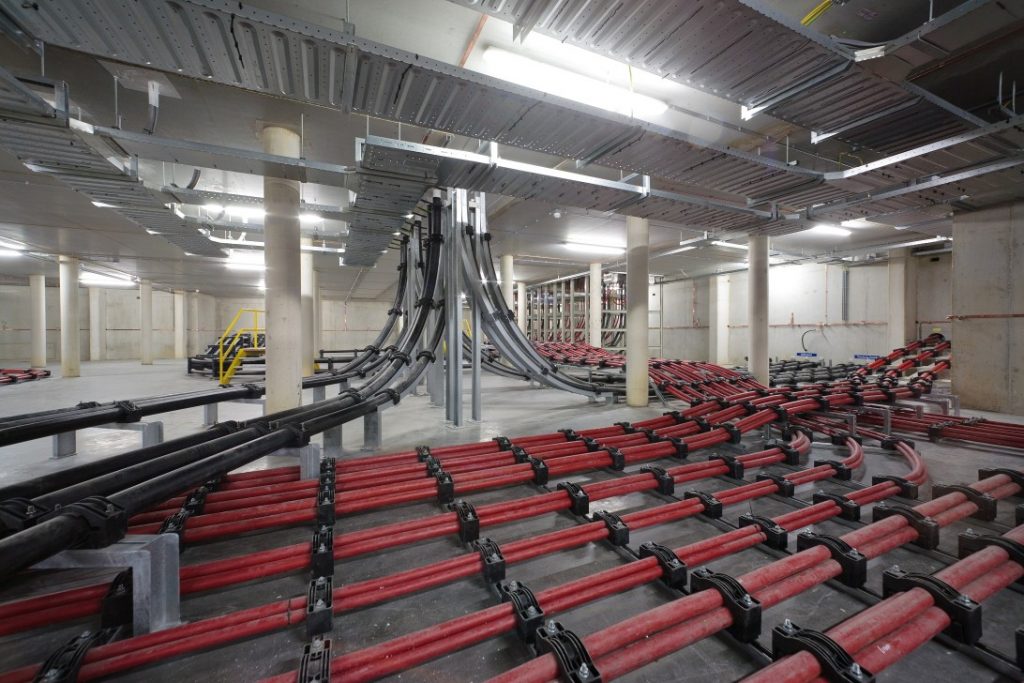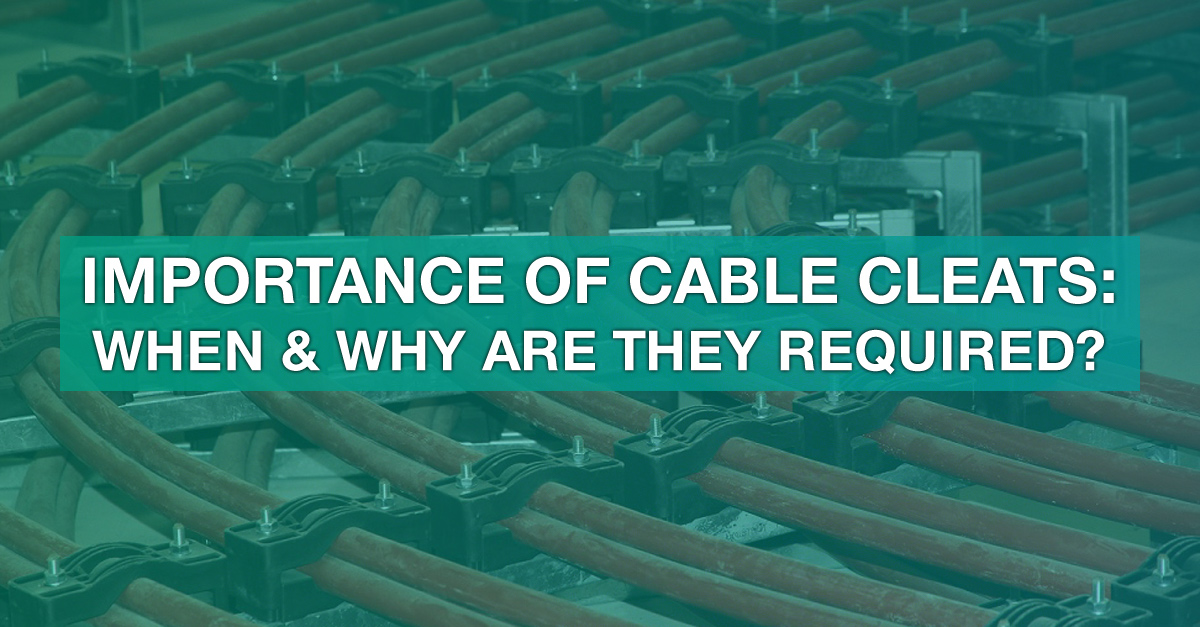Importance of Cable Cleats: When & Why are they Required?
When are Cable Cleats Required?
What is the importance of cable cleats? Why are they necessary? What are their benefits? Why are they used and when are they required? What can happen if clamping of a cable fixing is not correct? Are they good when it comes to Short Circuit Protection?
Those are some of the most common questions when it comes to the importance of cleats, clamps and fixings.  In previous blog posts, we explained what cable clamps and cleats are. In this post, we will focus on answering FAQs on their importance and benefits.
In previous blog posts, we explained what cable clamps and cleats are. In this post, we will focus on answering FAQs on their importance and benefits.
You should use a cable cleat to fix, retain and support cables correctly. This ensures that in the event of a short circuit fault or any other emergency, they contain the cables without causing damage. This enables you to restore the circuit after addressing the fault (short-circuit protection).
Failure to correctly clamp the electrical cable could result in a break in the flow of electricity. This can have serious consequences.
Importance of Cable Cleats: Why are they necessary?
Apart from the aforementioned, their importance also lies in:
- Supporting cables and conductors, and preventing excessive cable movement, making reworking easier and safer.
- Providing restraint and protecting against the effects of electro-dynamic forces that develop during a short circuit fault or earth fault.
- Reducing the mechanical load the cable may be subject to under its own weight, and the load the cable termination may be subject to.
- Facilitating a neat and orderly installation, allowing use of cables at their optimum ratings, whilst maximising the use of the available space.
- Attaching the cables to a mounting surface (ladder, tray, strut, or rail, wire and beam), without relying solely on the mounting surface for the retention of the cables.
Despite their importance and benefits, cable cleats had no British or International standards for many years. The Leading Cable Components Manufacturer – Prysmian Group – played an active role in developing the European Standard and advancing it into the current International Standard (BS EN 61914:2009 – IEC 61914). IEC 61914 highlighted the importance of cable cleat products, proper fixing and correct spacing. It also emphasised the risks to cable management systems and human life when cable cleats are not used.
Cable Cleats that E-Tech Components Specialises In:
E-Tech Components supplies a full range of electrical cable cleats — from Single Way and Trefoil to Quad and Bespoke solutions — designed for any installation. We partner with leading brands like The Prysmian Group and Dutchclamp to provide tested, certified cleats worldwide.
Dutchclamp cleats are made from glass fibre reinforced polyamide, resisting oils, UV, ozone, salt, moisture, acids and even nuclear radiation. They are V-0 (UL94) self-extinguishing, halogen-free, stackable, black and operate from -40°C to 120°C. Available pre-mounted with tailor-made fastening options, they provide reliable, durable and safe cable support for any installation.
As for our Prysmian cleats, they also offer secure support for single-core, trefoil and quad cables. Constructed from corrosion-resistant 316L Stainless Steel or durable polymers, they resist UV, weather and mechanical stress. Meeting BS EN 61914 and BS EN 50368, they ensure compliant, safe installations across environments. Compatible with standard and LSOH/LSZH cable sheaths, featuring multiple fixing options and double stacking, Prysmian cleats are versatile, long-lasting cable management solutions.
For more information and answers to Frequently Asked Questions on Clamps and Cleats (like “what is a cable cleat?”, “cable cleat specification”, “correct spacing”, “how to install fixings” and more, follow the link: What are Cable Cleats? The Definitive Guide
FREE Technical Advisory Service
E-Tech Components UK Ltd maintains a free technical advisory service.
Contact us about any questions, enquiries or requests you may have: +44 (0) 1744 762 929
